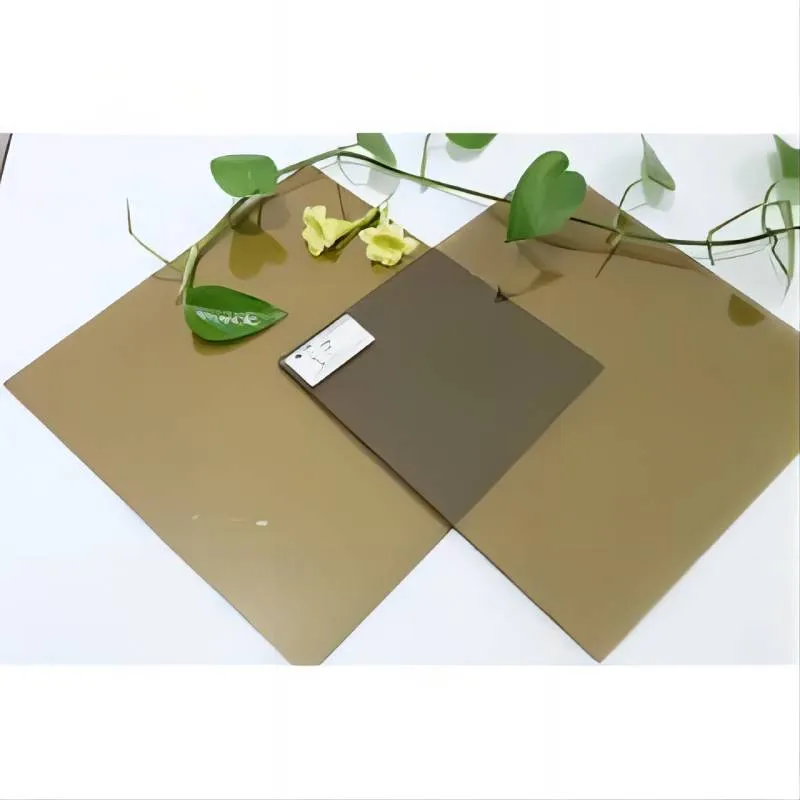Architectural Textured Glass A Fusion of Aesthetics and Functionality
Architectural textured glass has emerged as a prominent material in modern architecture, celebrated for its ability to marry aesthetic appeal with practical functionality. This innovative glass type features various surface patterns and textures, which not only enhance its visual appeal but also provide distinct practical advantages in architectural applications.
Textured glass is created through methods such as rolling, etching, or sandblasting, which result in surfaces that scatter light and create intriguing visual effects. This scattering ability is a key benefit; it allows for privacy without sacrificing natural light. In commercial buildings, for instance, architects often utilize frosted or patterned glass to ensure that interior spaces are filled with diffused sunlight while preventing outside visibility. This makes textured glass an ideal choice for offices and conference rooms where privacy is paramount, yet an inviting atmosphere is desired.
Moreover, the aesthetic qualities of textured glass can dramatically influence the character of a building. Architects often use it to create striking facades, accentuating the building's design through light and shadow play. Textured surfaces can evoke a sense of movement, serenity, or boldness, depending on the patterns and finishes selected. This reflective quality can turn a simple structure into a work of art, enabling it to engage and interact with its environment dynamically.
architectural textured glass
Beyond aesthetics, textured glass contributes to energy efficiency. With advancements in glass technology, textured glass can be coated with rays that reflect infrared light while allowing natural illumination. This characteristic assists in regulating indoor temperatures, reducing the reliance on artificial heating and cooling systems. Consequently, using architectural textured glass can lead to significant savings on energy bills, appealing not only to architects but also to environmentally conscious builders and clients.
Another notable aspect of textured glass is its versatility. It can be utilized in various ways across different types of buildings, from residential homes to skyscrapers. In private residences, textured glass can be incorporated into shower enclosures, doors, and windows, providing an elegant solution that maintains privacy while allowing natural light to filter through. In public spaces, it can be used for large-scale installations, such as curtain walls or partitioning systems, enhancing the overall architectural narrative.
Sustainability also plays a vital role in the popularity of textured glass. With a growing emphasis on reducing the environmental impact of construction, many glass manufacturers are focusing on producing eco-friendly options. Recycled materials and sustainable production methods are increasingly being employed in the creation of high-quality textured glass, aligning with green building standards and promoting a reduced carbon footprint.
In conclusion, architectural textured glass stands at the crossroads of functionality and artistry, making it an invaluable asset in contemporary architecture. With its unique ability to diffuse light, enhance privacy, contribute to energy efficiency, and provide stunning visual appeal, textured glass is not merely a building material; it is a transformative element that shapes the world around us. As architects continue to explore innovative designs, textured glass will undoubtedly remain a pivotal component in the evolution of architectural aesthetics and sustainability.
 Afrikaans
Afrikaans  Albanian
Albanian  Amharic
Amharic  Arabic
Arabic  Armenian
Armenian  Azerbaijani
Azerbaijani  Basque
Basque  Belarusian
Belarusian  Bengali
Bengali  Bosnian
Bosnian  Bulgarian
Bulgarian  Catalan
Catalan  Cebuano
Cebuano  Corsican
Corsican  Croatian
Croatian  Czech
Czech  Danish
Danish  Dutch
Dutch  English
English  Esperanto
Esperanto  Estonian
Estonian  Finnish
Finnish  French
French  Frisian
Frisian  Galician
Galician  Georgian
Georgian  German
German  Greek
Greek  Gujarati
Gujarati  Haitian Creole
Haitian Creole  hausa
hausa  hawaiian
hawaiian  Hebrew
Hebrew  Hindi
Hindi  Miao
Miao  Hungarian
Hungarian  Icelandic
Icelandic  igbo
igbo  Indonesian
Indonesian  irish
irish  Italian
Italian  Japanese
Japanese  Javanese
Javanese  Kannada
Kannada  kazakh
kazakh  Khmer
Khmer  Rwandese
Rwandese  Korean
Korean  Kurdish
Kurdish  Kyrgyz
Kyrgyz  Lao
Lao  Latin
Latin  Latvian
Latvian  Lithuanian
Lithuanian  Luxembourgish
Luxembourgish  Macedonian
Macedonian  Malgashi
Malgashi  Malay
Malay  Malayalam
Malayalam  Maltese
Maltese  Maori
Maori  Marathi
Marathi  Mongolian
Mongolian  Myanmar
Myanmar  Nepali
Nepali  Norwegian
Norwegian  Norwegian
Norwegian  Occitan
Occitan  Pashto
Pashto  Persian
Persian  Polish
Polish  Portuguese
Portuguese  Punjabi
Punjabi  Romanian
Romanian  Russian
Russian  Samoan
Samoan  Scottish Gaelic
Scottish Gaelic  Serbian
Serbian  Sesotho
Sesotho  Shona
Shona  Sindhi
Sindhi  Sinhala
Sinhala  Slovak
Slovak  Slovenian
Slovenian  Somali
Somali  Spanish
Spanish  Sundanese
Sundanese  Swahili
Swahili  Swedish
Swedish  Tagalog
Tagalog  Tajik
Tajik  Tamil
Tamil  Tatar
Tatar  Telugu
Telugu  Thai
Thai  Turkish
Turkish  Turkmen
Turkmen  Ukrainian
Ukrainian  Urdu
Urdu  Uighur
Uighur  Uzbek
Uzbek  Vietnamese
Vietnamese  Welsh
Welsh  Bantu
Bantu  Yiddish
Yiddish  Yoruba
Yoruba  Zulu
Zulu 

